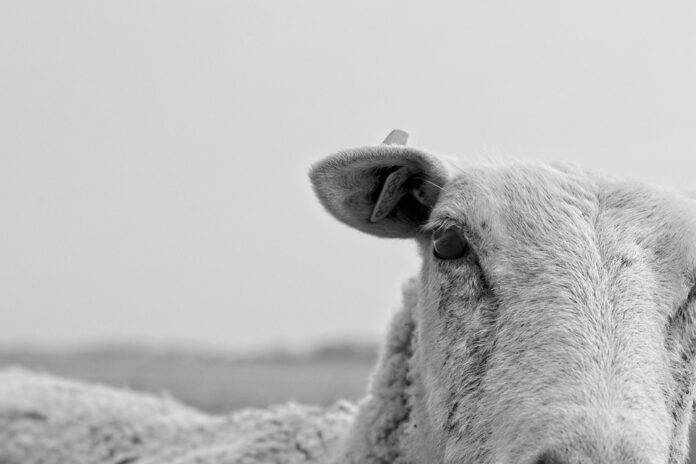Introduction
The global demand for plant-based and cultivated lamb products is on the rise, driven by evolving consumer preferences and a growing awareness of sustainability. This report delves into the top ten consumer trends shaping the market for these innovative protein sources, providing insights into financials, market volumes, and future projections.
1. Rise of Flexitarian Diets
As consumers increasingly adopt flexitarian diets, which emphasize plant-based foods while allowing for occasional meat consumption, the demand for plant-based and cultivated lamb is projected to grow. According to a report from the International Food Information Council, approximately 43% of consumers are reducing their meat intake, leading to an expected market growth rate of 12% annually in the plant-based protein sector.
2. Health Consciousness
Health concerns related to traditional meat consumption, such as high cholesterol and saturated fats, are prompting consumers to seek healthier alternatives. Plant-based lamb products typically contain lower fat and calorie content, appealing to health-conscious individuals. A study published in the Journal of Nutrition found that plant-based diets can significantly reduce the risk of heart disease, further driving interest in these products.
3. Sustainability and Ethical Considerations
Environmental sustainability is a key driver for consumers choosing plant-based and cultivated lamb alternatives. The livestock industry is responsible for a significant percentage of greenhouse gas emissions, with the Food and Agriculture Organization estimating 14.5% of global emissions come from livestock. Consumers are increasingly aware of these impacts, with 66% of surveyed individuals stating they prefer sustainable food options. This trend is expected to increase the market share of plant-based lamb products by 15% over the next five years.
4. Technological Advancements in Cultivated Meat
Advancements in food technology, particularly in cell-cultured meat production, are enhancing the quality and affordability of cultivated lamb. Companies such as Upside Foods and Mosa Meat are leading the charge, with investments exceeding $1.5 billion in cultivated meat technologies. As production costs decrease, consumer acceptance is expected to grow, with a forecasted market value of cultivated meat reaching $25 billion by 2030.
5. Flavor and Culinary Innovation
Flavor remains a critical factor in consumer acceptance of plant-based lamb. Producers are investing in culinary innovation to enhance taste and texture, making these alternatives more appealing. For example, brands such as Beyond Meat and Impossible Foods have developed products that closely mimic the flavor and mouthfeel of traditional lamb. Market research indicates that 70% of consumers are more likely to try plant-based meat if it is perceived as flavorful and satisfying.
6. Cultural and Regional Preferences
Consumer trends in plant-based and cultivated lamb are influenced by cultural and regional preferences. In regions with a strong culinary tradition of lamb dishes, such as the Mediterranean and Middle East, the acceptance of lamb alternatives is higher. A survey conducted by the Global Plant-Based Foods Association indicated that 40% of consumers in these regions are interested in trying plant-based lamb products.
7. Convenience and Accessibility
The convenience of ready-to-eat and easy-to-prepare plant-based products plays a significant role in consumer purchasing decisions. Brands that offer plant-based lamb in convenient formats, such as ready-to-cook meals or pre-seasoned options, are finding success in the market. The ready-to-eat plant-based food market is expected to grow by 20% over the next five years.
8. Social Media Influence and Marketing
Social media platforms are increasingly influencing consumer trends in the food industry. Brands that effectively leverage social media marketing strategies are more likely to engage younger consumers. A study by Nielsen found that 64% of consumers are influenced by social media when making food purchases. Successful campaigns featuring plant-based lamb products have seen engagement rates increase by over 30%.
9. Government Policies and Regulations
Government policies promoting sustainable agriculture and incentivizing plant-based food production are shaping consumer trends. Countries like Sweden and the Netherlands have introduced tax incentives for plant-based food companies, leading to increased investment in the sector. As regulations become more favorable, the market for plant-based lamb is projected to expand significantly.
10. Economic Factors and Pricing Strategies
Economic conditions and pricing strategies are crucial in determining consumer purchasing behaviors. As the cost of plant-based and cultivated lamb continues to decrease due to economies of scale, consumer acceptance is likely to improve. Market analysts predict that by 2025, the price of plant-based meat alternatives could be on par with traditional meat, further boosting demand.
Conclusion
The growing consumer demand for plant-based and cultivated lamb is a reflection of broader societal shifts toward health, sustainability, and innovation. As the market evolves, companies that align their products with these trends will be well-positioned to capitalize on the expanding consumer base. With projected growth rates and increasing acceptance, the future of plant-based and cultivated lamb looks promising.
[Read More: Global Sheep Industry Report 2025: Market Trends & Forecasts]




